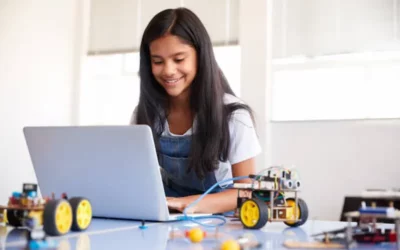If you’re looking for an introduction to Python programming, then this post is right for you. As such, it’s imperative that you learn Python if you want to make it big in this industry. Learning Python programming is an important step on your tech-talent growth path, if you want to become a programmer. You can use Python as a way of learning programming, which also happens to be one of the most popular languages used in data science nowadays. That said, let’s get started on Python programming for kids!
Table of contents
Introduction to Python Programming for Kids
Python is one of the most popular kids coding languages today. It is easy to learn, and powerful enough to solve complex problems. Python is designed with simple syntax which makes it a good choice for beginners. There are plenty of resources available on the Internet that can guide you through learning Python programming.
Kids nowadays are so used to technology that it’s simply a must for them to know how to program. Learning Python programming is not time-consuming, it’s fun, and it helps kids foster logical thinking, problem-solving skills, and creativity skills.
Python is extensively used in various fields like web development, data analysis, artificial intelligence, and robotics. Consequently, learning Python equips kids with practical skills applicable to real-world scenarios.
Python also has a vast community and abundant online resources, allowing kids to engage in collaborative learning and seek help when needed. Ultimately, mastering Python empowers kids to explore their ideas, build interactive projects, and lay a solid foundation for future technological advancements in IT.
What is Python Programming Language?
Python is a high-level, interpreted programming language that emphasizes code readability and simplicity. It was created by Guido van Rossum and first released in 1991. Python is widely used in various domains, including web development, data analysis, scientific computing, artificial intelligence, and more.
Key features of Python include:
1. Readability: Python’s syntax is designed to be easy to read and understand, making it an excellent choice for beginners. Its indentation-based block structure enhances code readability.
2. Simplicity: Python aims to have a clean and concise syntax, which reduces the amount of code needed for a given task. This simplicity allows developers to express their ideas more effectively.
3. Versatility: Python offers a broad range of libraries and frameworks that facilitate tasks such as web development (Django, Flask), scientific computing (NumPy, SciPy), data analysis (Pandas), machine learning (TensorFlow, PyTorch), and more.
4. Portability: Python is a cross-platform language, meaning that code written in Python can run on different operating systems such as Windows, macOS, and Linux without requiring major modifications.
5. Interpreted Nature: Python programs are executed line by line by an interpreter, which eliminates the need for compilation. This makes development and debugging faster and more efficient.
6. Dynamic Typing: Python is dynamically typed, allowing variables to hold values of any data type. This flexibility simplifies what is coding for kids and enhances productivity.
7. Strong Community and Support: Python has a large and active community of developers who contribute to its growth and provide extensive documentation, tutorials, and forums for support.
These features make Python an ideal language for both beginners and experienced programmers, enabling them to write powerful and efficient code for a wide range of applications.

Why Teach Python Programming to Kids?
Teaching Python programming to kids offers several advantages, like:
Firstly, Python’s simplicity and readability make it an ideal language for young learners. It’s clean syntax and intuitive structure make it easier for kids to understand and write code, fostering their logical thinking and problem-solving skills.
Python also has numerous real-world applications that make it relevant and valuable for kids to learn. For instance, Python is extensively used in web development, allowing them to create interactive coding websites for kids and web applications.
It is also widely used in data analysis, enabling kids to analyze and visualize data and make informed decisions. Python’s applications extend to scientific computing, where kids can explore simulations, modeling, and calculations.
Moreover, Python is employed in artificial intelligence and machine learning, areas that are revolutionizing many industries. By learning Python, kids can gain a solid foundation in these emerging technologies, preparing them for future careers and innovative problem-solving.
Additionally, Python has a strong presence in robotics and the Internet of Things (IoT), allowing kids to program and control robots and smart devices. This hands-on experience encourages creativity and practical application of programming concepts.
Overall, teaching Python to kids equips them with a versatile and widely-used programming language, enabling them to create real-world applications, understand technology, and prepare for the digital age.
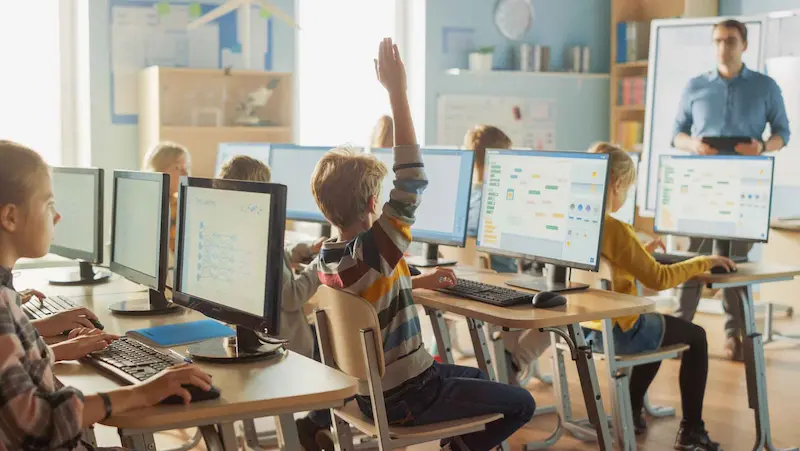
Python Programming for Kids: Getting Started
Getting started with Python programming for kids involves a few key steps:
1. Setting up a Python development environment: Install Python on the computer for kids and choose an Integrated Development Environment (IDE) suitable for kids, such as IDLE or Thonny. These IDEs provide a user-friendly interface and essential features like syntax highlighting and code execution.
2. Basic Python programming concepts: Introduce kids to fundamental concepts like variables, data types (strings, numbers, booleans), arithmetic operations, input/output, conditionals (if-else statements), loops (for and while loops), and functions. Explain these concepts using simple and relatable examples.
3. Simple Python programs for kids: Start with small programs to engage kids and reinforce their understanding. Examples can include creating a calculator, a guessing game, or a program that prints a pattern. Encourage experimentation and modification of code to see different outcomes.
4. Encourage problem-solving: Present coding challenges or puzzles that require kids to apply their knowledge of Python programming concepts. Encourage them to think critically, break down problems into smaller tasks, and develop step-by-step solutions.
5. Hands-on projects: Engage kids in interactive projects like creating a text-based adventure game, building a basic website, or developing a simple chatbot. These projects help them apply their skills, ignite creativity, and experience the satisfaction of seeing their code come to life.
6. Resources and support: Provide kids with age-appropriate Python programming resources like online tutorials, interactive coding platforms, free coding for kids, and coding books tailored for young learners. Encourage them to seek help from forums or join coding clubs or workshops to foster a sense of community and collaborative learning.
7. Gamify learning: Use code games for kids and platforms designed specifically for kids, where they can learn Python in a fun and interactive manner. These platforms often provide engaging challenges and visual feedback to keep kids motivated.
By following these steps, kids can begin their journey into Python programming, building a solid foundation while having fun and developing valuable problem-solving skills along the way.
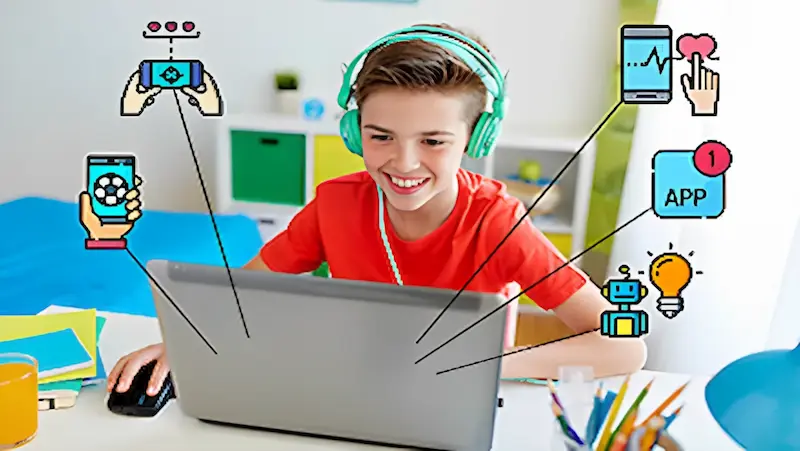
Fun Projects for Kids to Learn Python Programming
There are certainly various projects for kids to learn Python. Here are five fun projects for kids to learn Python programming:
1. Chatbot: Build a simple chatbot that can engage in conversations with the user. Kids can use conditional statements, functions, and string manipulation to create responses based on user input. They can add personality to the chatbot by incorporating jokes, facts, or interactive features.
2. Calculator: Develop a basic calculator program that can perform arithmetic operations such as addition, subtraction, multiplication, and division. Kids can practice using variables, operators, and user input to create a functional calculator with a user-friendly interface.
3. Game Design: Let kids unleash their creativity by designing and coding their own games. They can create a text-based adventure game, a hangman game, or even a simple platformer using libraries like Pygame. This project allows kids to apply their programming skills while having fun playing the game they created on free coding websites for kids & others.
4. Weather App: Build a program that retrieves weather information based on the user’s location or a specific city. Kids can use APIs (Application Programming Interfaces) to fetch weather data and display it in a user-friendly format. This project introduces them to API integration and working with external data sources.
5. Animated Storytelling: Encourage kids to combine storytelling with Python programming by creating an animated story or presentation. They can use libraries like Pygame or Tkinter to display text, images, and animations. This project allows them to enhance their storytelling skills while exploring the graphical capabilities of Python.
These projects offer engaging and hands-on experiences, allowing kids to apply their Python programming skills in a creative and interactive way. They provide opportunities to explore different aspects of programming while sparking curiosity and imagination.

Tips and Resources for Parents
Here are some tips and resources for parents to help their kids learn Python programming:
1. Online Python Courses for Kids: Many online platforms offer Python courses specifically designed for kids. Websites like Codecademy, Udemy, and Coursera provide interactive lessons, quizzes, and projects tailored for young learners. These courses often include video tutorials and coding exercises to reinforce learning.
2. Coding Camps and Workshops: Look for local coding classes for kids, camps, or workshops that focus on Python programming for kids. These programs provide hands-on learning experiences in a collaborative environment, allowing kids to interact with peers and learn from experienced instructors.
3. Resources and Tutorials: There are various resources and tutorials available online that cater to kids learning Python. Websites like Scratch Coding for kids, Code.org, and Khan Academy offer Python tutorials and interactive coding platforms designed specifically for young learners. They provide step-by-step instructions and engaging activities to make learning fun and accessible.
4. Python Project Ideas for Kids: Encourage kids to work on Python projects that align with their interests. Websites like “Invent with Python” offer project-based tutorials, ebooks, and games that guide kids through creating projects such as a tic-tac-toe game, a secret code generator, or a simple web scraper. These projects help reinforce concepts while fostering creativity.
5. YouTube Channels and Coding Apps: Explore YouTube channels that specialize in teaching Python programming to kids. Channels like “CS Dojo Kids” and “Tech With Tim” provide video tutorials, coding challenges, and project ideas suitable for young learners. Additionally, coding apps like “ScratchJr” and “Tynker” offer visual coding experiences that introduce kids to programming concepts before transitioning to Python.
Remember to provide a supportive learning environment, encourage experimentation, and celebrate small achievements. Python programming can be fun and rewarding for kids, and with the right resources and guidance, they can develop valuable skills and a passion for coding.
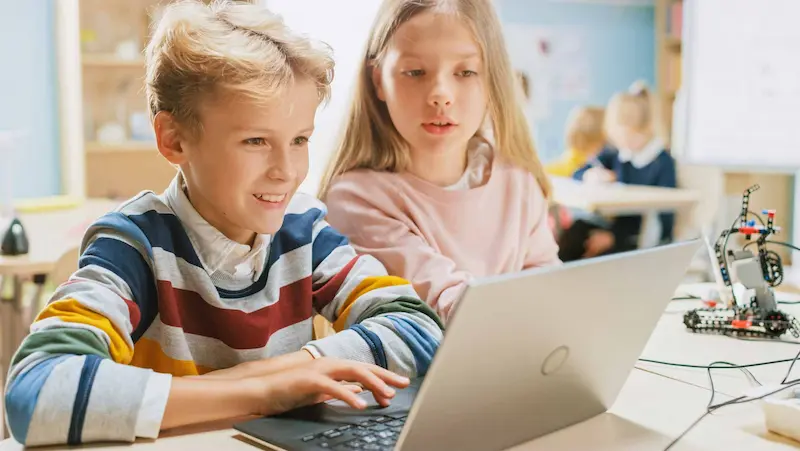
Conclusion
Encouraging your kids to learn Python programming can have numerous benefits and open up exciting opportunities for their future. By introducing them to this versatile language, you are equipping them with essential skills in problem-solving, logical thinking, and creativity.
As parents, you can play a crucial role in supporting and guiding your kids on their coding journey. Explore resources like tutorials, project ideas, and coding apps that make learning engaging and interactive. Remember to be patient and encourage your kids to explore their own ideas and projects.
By helping your kids learn Python, you are preparing them for the digital age and the rapidly evolving technological landscape. So, embrace the opportunity to introduce your kids to Python programming. With your guidance, support, and a plethora of resources available, they can embark on a journey of discovery, creativity, and growth.
To get your hands on more such educational and free resources on coding, robotics, game development, etc., do check out the Brightchamps Blog Page now!’
Frequently Asked Questions
Children can start learning Python programming as early as 8-10 years old, but the optimal age may vary depending on their interests and cognitive abilities.
Resources like BrightCHAMPS, Codecademy, Scratch, Python for Kids book, Coding camps/workshops, and Python.org provide materials and tutorials for parents/teachers to teach Python to kids.
Kids can start learning Python with online courses, coding platforms like Scratch, and Python resources for beginners. Good beginner projects include creating a calculator, building a simple game, or designing a chatbot.
Common challenges for kids learning Python include grasping syntax, debugging errors, and staying motivated. They can overcome them by practicing regularly, seeking help from resources/mentors, and working on engaging projects.
No specific skills are required, but basic computer literacy and familiarity with math concepts like numbers, operations, and logic can be beneficial for learning Python programming for computer coding for kids.
Some fun ways to teach Python programming to kids include using interactive coding games, creating visual projects, incorporating storytelling elements, and encouraging hands-on coding challenges.
Parents and teachers can encourage kids to learn Python by providing resources, celebrating achievements, engaging in conversations, and facilitating hands-on projects.
Kids who learn Python programming can pursue careers as software developers, data analysts, web developers, and machine learning engineers, and pursue various STEM-related fields.
Kids can continue developing Python skills by building more complex projects, participating in coding competitions, contributing to open-source projects, and pursuing advanced Python courses.

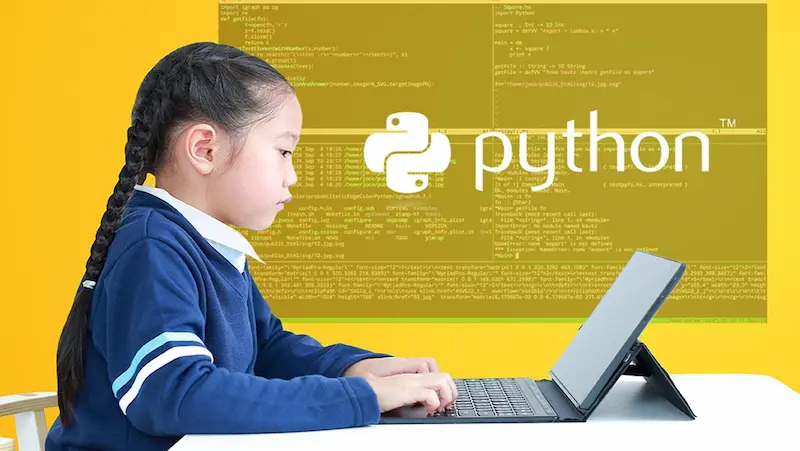
 We are an army of educators and passionate learners from BrightChamps family, committed to providing free learning resources to kids, parents & students.
We are an army of educators and passionate learners from BrightChamps family, committed to providing free learning resources to kids, parents & students.





